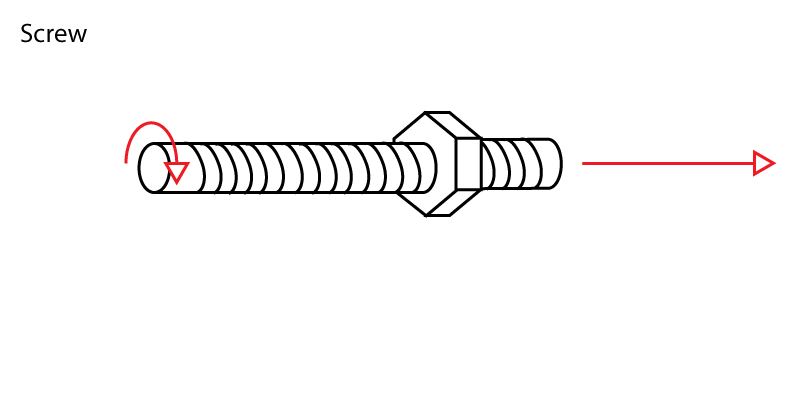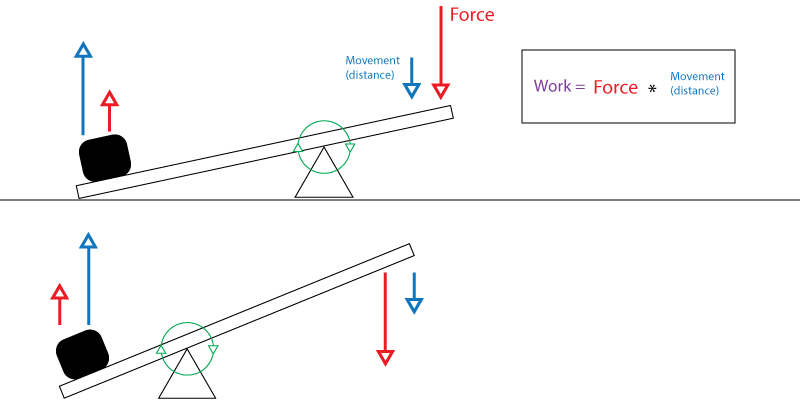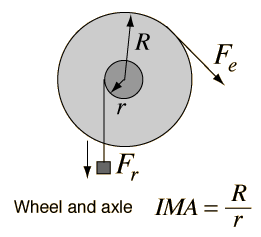Welcome to Cedar Valley Maker Camp Projects
Choose your camp project:
Learning the Laser Cutter/Engraver: Part 1-Designing
Learning the Laser: Part 2-Laser Setup and Operation
Maker Camp Project: Animating at Home
Rube Goldberg Machine Project
Learning the Laser, Part 1: Design Using Inkscape
In this project, you will learn about the Laser Cutter/Engraver and how it works. The Laser cutter/engraver is a makerspace favorite because it lets you take digital images and make them physical in no time at all. You will also get an introduction to designing in Inkscape for use with the laser cutter software. We hope you take up the challenge to design in Inkscape and bring your design to Cedar Valley Makerspace where we will assist you in cutting/engraving your design.
Here is a Youtube tutorial using Inkscape to create your laser design
The range of projects that can be done on the laser is mind boggling as well. Since it was purchased, the machine has cut and engraved keychains, boxes, Christmas tree ornaments, foam RC airplanes, templates, stamps, COVID-19 face shields, images, game boards and more! Below are some of those cool projects.
Join the Cedar Valley Makers Discord to learn about other Maker projects.
Say hello, ask us any questions, and share your recorded Animation project!
Discord Server Link https://discord.gg/c8dDNu3
Learning the Laser: Part 2, Laser Setup and Operation
This video will provide a hands-on tour for using the Cedar Valley Maker
Laser Cutter/Engraver. After viewing this video, you'll be able to import
your design into the Laser software and cut your vector project.
Maker Camp Project: Animating at Home
In this project, you will learn about Animation and how it works. You will also get an introduction to flip book animation and some of the tools you can use to make your own flipbooks. We hope you take up the challenge to design, create and record your animation for sharing.
Join the Cedar Valley Makers Discord to learn about other Maker projects.
Say hello, ask us any questions, and share your recorded Animation project!
Discord Server Link https://discord.gg/c8dDNu3
Here are some resources that go more in depth on the topics covered in this video:
https://en.wikipedia.org/wiki/Persistence_of_vision
https://www.youtube.com/watch?v=YismwdgMIRc
https://www.khanacademy.org/partner-content/pixar/animate/ball/v/intro-animation
Here are some really impressive flip books from YouTube:
https://www.youtube.com/watch?v=ntD2qiGx-DY
Here’s an article about resources for digital animation and how you can start
https://www.bloopanimation.com/animation-for-beginners/#software
Welcome to the First Cedar Valley Maker Camp Project:
Let's Build a Rube Goldberg Machine!





Join the Cedar Valley Makers Discord to learn about other Maker projects.
Say hello, ask us any questions and share your recorded Rube Goldberg Machine.
Discord Server Link https://discord.gg/c8dDNu3
In this project, you will learn about the parts of Rube Goldberg Machines and the physics that makes them work. We hope you take up the challenge to build, film and share your own machine too!
The building blocks of a Rube Goldberg Machine are really just smaller machines. In physics, the most basic machines are known as simple machines, and there are only six of them. These machines can take an input force and change the direction or magnitude of the input.
The six simple machines are :
-
The Screw
-
The Lever
-
Wheel and Axle
-
Pulley
-
The Wedge
-
The Incline Plane
Simple machines can be found in common objects. For example:
Part 1: Simple Machines:
The Screw
Screws convert rotation into linear motion, and rotational force into linear force. Screws consist of an inclined plane wrapped around a cylinder or some other circular 3d shape. This wood screw is an example of a screw, and uses the helical plane to turn the rotational force applied through a screwdriver into linear force as the screw is driven into a piece of wood. In a Rube Goldberg Machine, screws are less common, but some machines use the spiral along a giant screw to direct a ball or marble. See the diagram below for a visualization of how a screw converts rotational force into linear (in a straight line) movement.


As you can see, this screw converts rotational motion and force into linear motion and force. The output force and motion depend on the pitch of the screw. A screw is a inclined planed rotated around an axis.
The Lever
A see-saw is a classic example of a lever. A lever is a rigid beam that pivots around a point somewhere along its length. This point is called the fulcrum and its location determines the ratio of input force to output force when the lever is used. The ratio of input force to output force is called mechanical advantage. In the context of levers, most people use the word leverage instead of mechanical advantage.

On a see-saw, the fulcrum is almost always in the center of a beam, so the input force is the same as the output force on the other side. By moving the fulcrum, a lighter weight on one side of the see-saw could lift a heavier weight on the other side. Levers are one of the easiest simple machines to use in a Rube Goldberg Machine. Just lay a ruler or almost any oblong object over a raised point (such as a pen or the edge of a table). Levers are really good for triggering new features of your Rube Goldberg Machine. Below is a diagram of a lever that might help understand the relationship between force, distance, and the position of the fulcrum.

As you can see, the position of the fulcrum changes the amount of force needed to lift the load on the lever, and also the height the lever can lift to. The diagram also shows the change in the direction of force.
The Wedge
Wedges can be used to separate two objects or portions of an object, lift up an object, or hold an object in place with friction. A Wedge changes the direction of the force applied to its flat end to the tapered sides, each of which directs force in different directions.The angle at the point of the wedge determines the mechanical advantage (the ratio of input force to output force). Wedges with a narrow angle require less force to do the same amount of work as a wider wedge. In Rube Goldberg Machines, wedges can be used to push two objects apart, pop balloons, cut strings, stop the motion of an object, and more. The diagram below shows a wedge separating two objects.


The wedge on the left has a lesser angle resulting in a greater output force than the wedge with a wider angle. The trade-off is the amount of output motion. The wedge on the right will move the two objects further apart than the one on the left.
The Wheel and Axle
The wheel and axle is a simple machine that increases or decreases the magnitude of rotational force by changing the diameter of one or both parts. By turning a large wheel connected to an axle, the force needed to move an object connected to the axle is greatly reduced. This simple machine trades force for velocity at the perimeter of the output part. Wheels and axles are also commonly used to reduce friction and reduce force necessary to move an object. In a Rube Goldberg Machine, wheels and axles can be included by using toy cars.


As you can see, force from the wheel increases as the diameter decreases at the axle. On the other hand, the velocity of the rotation at smaller diameters is less. The tradeoff is rotational distance for rotational force.
The Pulley
A crane uses pullies to change the direction of force being applied through a cable. One pulley on its own cannot change the magnitude of force applied through the cable, however multiple pulleys in a series can. A pulley typically consists of a rope, string or cable wrapped partially around a wheel and axle so that the point of rotation for the wheel and axle is the same for the cord as it moves through the pulley. In a Rube Goldberg Machine, pulleys can be more informal, as long as the pulley changes the direction of force being applied to a cord of some kind. Pulleys are most commonly used to raise and lower objects.


A single pulley does not change the amount of force applied to one end of the cable going around it, however, the pulley does change the direction of the force applied.
The Inclined Plane
This boat ramp is an example of an inclined plane. Inclined planes are often used to lift or lower objects. The more gradual the slope of an inclined plane, less force is needed to raise or lower the object in question. An inclined plane is a surface that is angled down in one direction so it creates a slope. This ramp is used to easily lower and raise a boat into water with a trailer. Most boat ramps are gradual to reduce the force needed to extract a boat from the water. In Rube Goldberg Machines, Inclined planes are most useful in conjunction with gravity to turn downward gravitational force into forward motion.


A plane with a lesser angle has a greater output force than a wedge with a wider angle, which means pushing a load to a certain height is easier, but the distance you will have to push will be greater.
It’s time to brainstorm! How can you build a Rube Goldberg Machine that uses all six simple machines at least once?
Part Two: Types of Energy and Energy Transfers
Energy is a property required for an object to move or be heated. If the object does not have any energy, neither of these things can happen. Energy can be transferred to an object if it is heated by another source or acted on with force.
Types of Energy
-
Kinetic energy is the type of energy associated with motion. If an object has kinetic energy, It is in motion. Alternatively, thermal energy is another form of kinetic energy, however an object with thermal energy is not moving altogether, but the molecules that make up that object are moving faster, which is observable through temperature. Other types of kinetic energy include sound, radiant (light), chemical, and electrical.
-
Potential energy is energy stored within an object based on it’s position or structure. Gravitational potential energy, for example, exists when an object is held above the ground. Until the object is released, it doesn't have kinetic energy, however it’s position gives it potential to have kinetic energy, hence the term potential energy. Once the object is released, the potential energy converts to kinetic energy as it falls towards the ground. Energy can also be stored in chemical reactants (like unmixed vinegar and baking soda) or elastic materials (like rubber bands or springs).
Transfers of Energy - A Rube Goldberg Machine often converts one type of energy to another type of energy and then back again. For example, a ball resting at the top of an inclined plane has potential energy, and when it is set into motion, the potential motion converts to kinetic energy until it acts on another object which is stationary.
Law of Conservation of Energy - Energy cannot be created or destroyed, only converted to different forms or transferred to another object. Just remember, if you don’t have a way to add energy to your machine (like using gravity or chemical reactions), your machine will stop working.
Brainstorming time again! What kinds of energy will each step in your Rube Goldberg Machine utilize?
Part Three: Safety Warning and Links of Interest
*Safety Warning*
Some Rube Goldberg Machines can be extremely elaborate, however some steps in larger machines can be dangerous. Using violent chemical reactions, heavy objects, or sharp objects is not advisable without safety precautions and the approval (and help) of an adult.
The document we wrote as part of the Cedar Valley Maker Camp is only the tip of the iceberg. This is an extremely basic intro to physics,but rather than going further in depth, we will leave links below for the curious and knowledge hungry to learn more:
Simple Machines Wikipedia Page
Khan Academy on Mechanical Advantage
Khan Academy on Simple Machines
In addition to scientific information, here are some impressive Rube Goldberg machines from YouTube to draw inspiration and awe from:
And finally, when you build your own machine, make sure you take a video and submit it to the Cedar Valley Maker Camp! You’ll get a special completion badge in the Discord server, and if you want, we will post it for other makers to see your work!
If you’re ambitious, the Rube Goldberg Organization has a yearly contest with a different challenge each year. This year, the challenge is “water a plant”. The link for more information is here.
We can’t wait to see what you come up with. Happy Making!
Directions for creating and recording your Rube Goldberg Machine
When designing, building and recording your Rube Goldberg machine:
-
Attempt to use at least three of the six simple machines (wedge, wheel and axle, screw, lever, inclined plane, pulley)
-
Design your machine to accomplish one simple task
-
Name your machine
-
When recording your machine, walk us through the steps from start to finish. Identify the various simple machines in your big machine
-
Lastly, show us how it works!
To send us your recorded video, do one of the following
-
Email it as an attachment to info@cedarvalleymakers.org
-
Send us link to a web location where you’ve chosen to save your recording (YouTube, FaceBook, Google Drive, Other)
-
Upload directly to the Cedar Valley Makerspace Discord site. Instructions for Discord upload
REMEMBER:
Join the Cedar Valley Makers Discord to say hello, ask us any questions and share your recorded Rube Goldberg machine. https://discord.gg/c8dDNu3
.png)